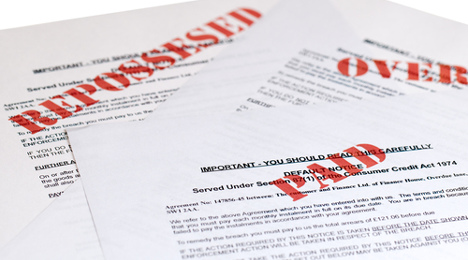March auto defaults dip 5 basis points

Photo from Shutterstock.com
The auto finance component of the S&P/Experian Consumer Credit Default Indices showed contract defaults improved in March both on a year-over-year and sequential basis.
According to data released by S&P Dow Jones Indices and Experian, auto loan defaults came in at 1.00 percent, down 5 basis points from the previous month. In March of last year, the rate stood at 1.02 percent.
Analysts indicated the March composite rate — a comprehensive measure of changes in consumer credit defaults — remained unchanged from the previous month, holding at 0.94 percent in March.
The bank card default rate registered at 3.31 percent, up 9 basis points from February.
The first mortgage default rate came in at 0.75 percent, up 1 basis point from February and reaching a one-year high.
The five major cities S&P and Experian track for this report showed mixed results in March with two higher and three lower default rates.
New York had the largest increase, reporting in at 1.09 percent, up 15 basis points from February.
Chicago posted at 1.05 percent for March, rising 6 basis points from the previous month.
Miami came in at 1.40 percent, down 2 basis points from February.
Dallas reported a decrease of 4 basis points at 0.79 percent.
Los Angeles saw its first default rate decrease since September of last year, down 5 basis points to settle at 0.75 percent.
Where analysts raised concerns stemmed from the national bank card default rate, which came in at 3.31 percent in March. That reading sets a 45-month high.
When comparing the bank card default rate among the four census divisions, S&P and Experian determined the bank card default rate in the South is considerably higher than the other three census divisions.
Upon further analysis to the South’s three census regions, East South Central — comprised of Kentucky, Tennessee, Alabama, and Mississippi — has the highest bank card default rate.
Despite the bank card default metrics, David Blitzer, managing director and chairman of the index committee at S&P Dow Jones Indices, was mostly upbeat about the March data.
“The continuing low consumer credit default rate reflects recent strong job growth and a favorable economy,” Blitzer said. “The economy is also supporting consumers’ positive outlook and strong sentiment about the economy and their financial condition.
“Data from the Federal Reserve shows that consumer credit continues to expand at more than 6 percent per year, the highest pace since 2007-2008,” he continued. “Other Federal Reserve data indicate that household net worth in 2015 and 2016 rose 2.3 percent each year.
“Currently the debt service ratio for consumer credit — the percentage of disposable income required to service consumer credit debt — is 5.58 percent, up from its recent low of 4.92 percent in 2012 but lower than the 6.01 percent peak seen shortly before the financial crisis,” Blitzer went on to say.
“The higher interest rates that most analysts expect over 2017-2018 are likely to combine with continued growth in consumer credit to push the debt service ratio back towards the 6 percent level,” he added.
Jointly developed by S&P Indices and Experian, analysts noted the S&P/Experian Consumer Credit Default Indices are published monthly with the intent to accurately track the default experience of consumer balances in four key loan categories: auto, bankcard, first mortgage lien and second mortgage lien.
The indices are calculated based on data extracted from Experian’s consumer credit database. This database is populated with individual consumer loan and payment data submitted by lenders to Experian every month.
Experian’s base of data contributors includes leading banks and mortgage companies and covers approximately $11 trillion in outstanding loans sourced from 11,500 lenders.

 View The Latest Edition
View The Latest Edition

